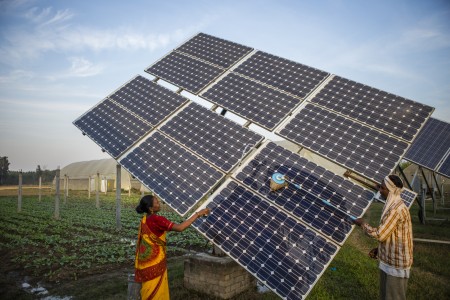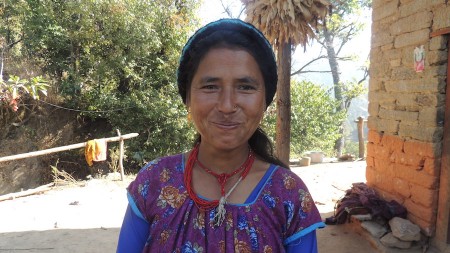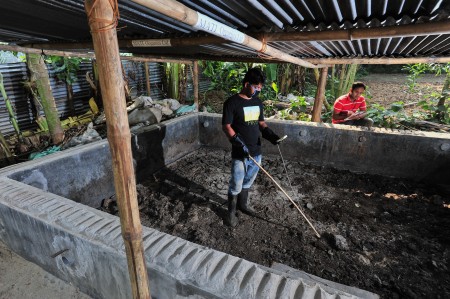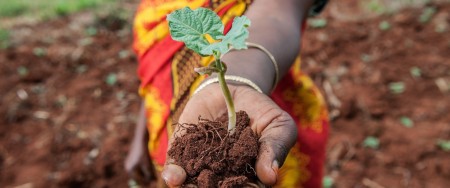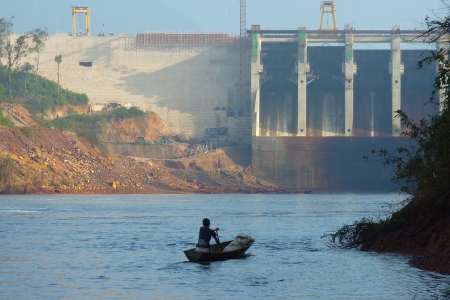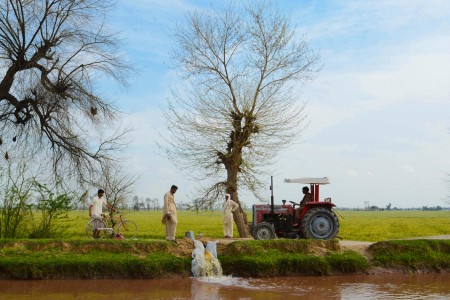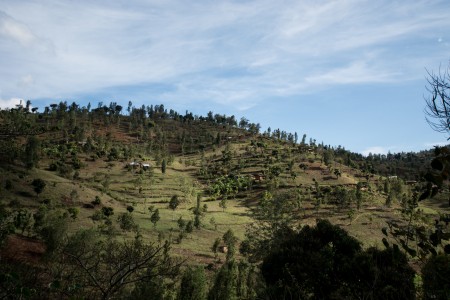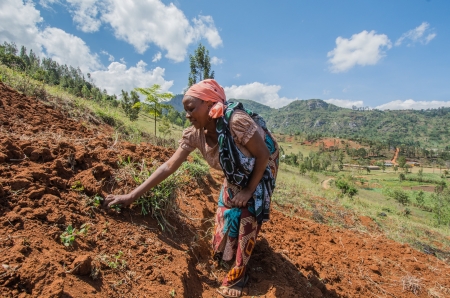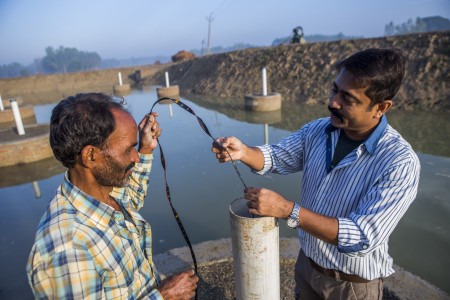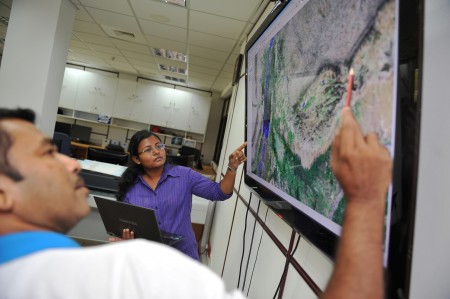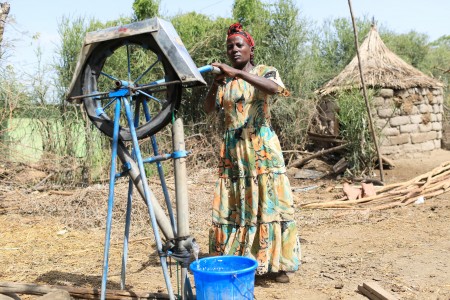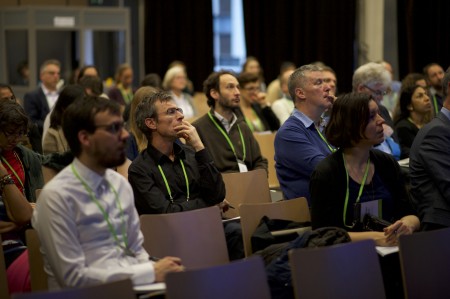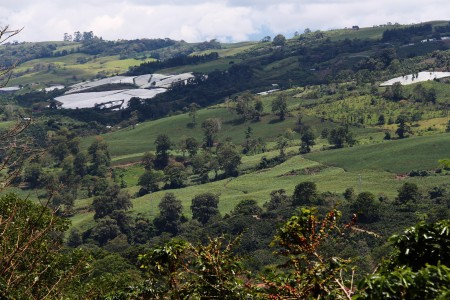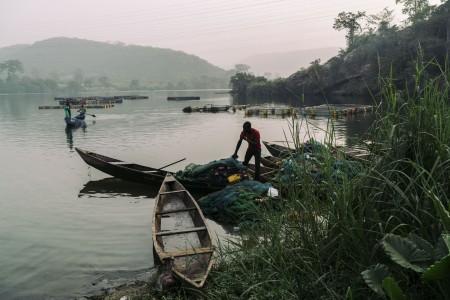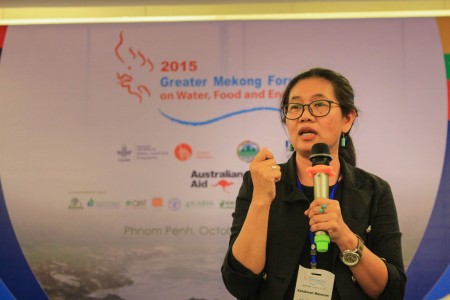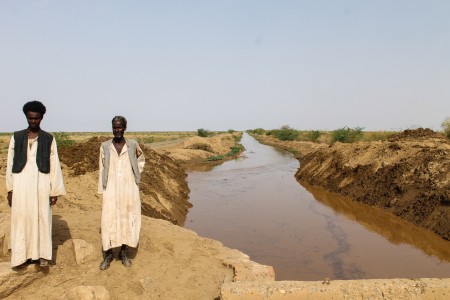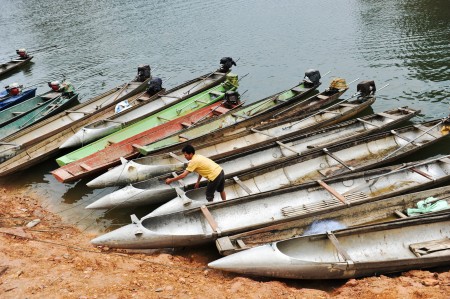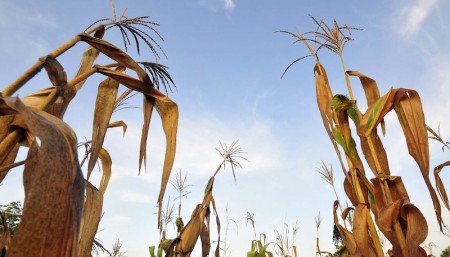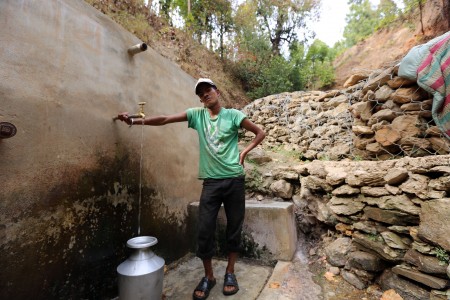The WLE 2015 Annual Report > Solutions for sustainable intensification of agriculture

Sustainably using the hidden water below our feet for food and prosperity
“In the past, we have not discussed our choice of crops for irrigation or water use during village meetings, but after playing this game we will. There are good reasons for us to discuss this together.”
A group of villagers living in Andhra Pradesh, India, reached this conclusion after playing an experimental game designed to simulate real-life decision making about the use of groundwater resources. The game, which is being piloted in water-scarce communities, asks players to choose either crops that require little irrigation but give low returns or crops that requires more irrigation but give higher returns. The availability of water changes based on what decisions are made, and if the choices made during gameplay are unsustainable, the water runs out and the game ends.
Villagers played two different versions of the game, one in which players are not allowed to discuss their choices and one in which they are. The results revealed that collective decision making – at least in the game, and therefore likely also in reality – leads to more sustainable groundwater use.
Scientists from the CGIAR Research Program on Water, Land and Ecosystems (WLE) recognize that, if used sustainably, groundwater could underpin future global food and nutrition security as well as contribute to public health, economic growth and climate resilience.
World’s first solar cooperative checks groundwater risks in India
Cheap, effective technologies for extracting groundwater have been gradually introduced in India over the past 40 years. They have transformed agriculture and significantly increased production; unfortunately, they have also resulted in over-pumping of groundwater, depleted aquifers and a great deal of energy consumption.
In an effort to find a “green alternative” to the country’s many diesel- and electricity-powered pumps, the Indian government, encouraged by WLE scientists, recently introduced solar-powered pumps as new way for farmers to access groundwater for irrigation. While these pumps rely on a cleaner source of energy, scientists worried that, because the electricity used for pumping is perceived as free, it would lead to over extraction and depletion of the groundwater resource. In order to provide incentives for farmers to only pump as much water as they need, WLE scientists are suggesting lowering subsidies for electricity-powered pumps and enabling farmers to sell back surplus solar power to the utility grid.
“This concept will not only benefit the farmers by supplementing their incomes but will also benefit the environment by incentivizing farmers to conserve groundwater,” says Dr. Tushaar Shah of the International Water Management Institute (IWMI).
To avoid the high transaction costs that would be incurred by having having utilities buy-back power from individual farmers, the world’s first solar pump irrigator’s cooperative enterprise was launched in Dhundi, Gujarat, last year. This set-up reduces the administrative burden for utilities and paves the way for wide-scale uptake of solar buy-back schemes in India.

Scientists estimate that such schemes could have a multitude of concrete benefits by the year 2022: per annum, farmers could earn up to USD 1,000 net, 150 billion kWh of green power could be generated and groundwater use for irrigation could be reduced from 240 BCM to 190-200 billion cubic meters.
Opportunities and pitfalls for groundwater use in Africa
Agricultural productivity in Africa lags far behind that of South Asia, and it has been argued that the relatively limited uptake of irrigation is partly to blame. In fact, less than four percent of the area under agricultural cultivation on the continent is irrigated.
To support policy makers, investors and farmers in Africa to sustainably use groundwater, scientists are developing a number of tools and resources that can help expose potential trade-offs.

For example, scientists have estimated groundwater quantity and potential for sustainable use in Africa. They found that 692 cubic kilometers per year of groundwater could be used for irrigation without compromising aquifers. However, availability of groundwater varies greatly depending on location: a map that indicates areas of high groundwater drought risk shows that about 39 million people are at risk of experiencing groundwater scarcity, which could severely compromise their livelihoods, especially in times of drought.
“The more we know about where and how much groundwater is available, the better we can pinpoint where potential risks exist as well as develop solutions that take advantage of this resource in a sustainable way,” says Karen Villholth of IWMI.
Indeed, WLE contributes to a new global partnership, the Groundwater Solutions Initiative for Policy and Practice (GRIPP), to help fill knowledge gaps and guide decision makers on smart policies and investments to increase productivity without sacrificing long-term availability and use of groundwater.
Groundwater plays a crucial role in our environment and livelihoods but little has been done to systematically manage this hidden resource. WLE researchers continue to seek ways to better valuate groundwater, exposing its true worth; to identify and define thresholds for sustainable use; and finally to foster collective governance and new institutions that can manage groundwater use for multiple benefits such as food security, human prosperity and environmental sustainability.
Acknowledgments
The solutions mentioned in this article are being developed by the following projects:
- Experimental Games for Strengthening Collective Action: Learning from Field Experiments in India and Colombia, led by the International Food Policy Institute in partnership with the Foundation for Ecological Security and other partners
- Sustainable Groundwater in Africa led by the International Water Management Institute
- The IWMI-India program led by the International Water Management Institute
Agriculture 2.0:
towards a global revolution
for sustainabilitywater, land and ecosystems research highlights
2015 – 2016
A message from Johan RockströmWLE Steering Committee Chair
Agriculture 2.0
Current farming practices use 70 percent of the Earth’s fresh water, degrade 40 percent of land and contribute to 30 percent of greenhouse gas emissions.
But there is a better way: putting sustainability at the center of our food systems will not only reverse climatic degradation, but also accomplish the productivity that is necessary to feed 9 billion people by 2050.Sustainability is not just a necessity. It is an untapped opportunity for improving the livelihoods of male and female smallholders farmers, ensuring the productivity of the land into the future, and better harnessing the services provided by our ecosystems.
The CGIAR Research Program on Water, Land and Ecosystems (WLE) is doing its part to make the sustainable intensification of agriculture a reality by producing evidence-based solutions for water and land management via partnerships that span nationalities, sectors and disciplines.
We invite you to explore highlights from WLE’s work below.
in 2015 wle: field tested 62 technologies and natural resource management practices, helped 125,000 farmers to apply new technologies or management practices, supported improved technologies or management practices on 2.5 million hectares
Solutions for sustainable intensification of agriculture
In 2015 WLE: established 41 multi-stakeholder platforms and influenced 200 policy processes
Engaging with the global agenda
Practical approaches to regional problems
WLE in 2015 had 110,000 website visits and 43,000 views on CG-space and published 141 ISI publications and 94 open access publications
